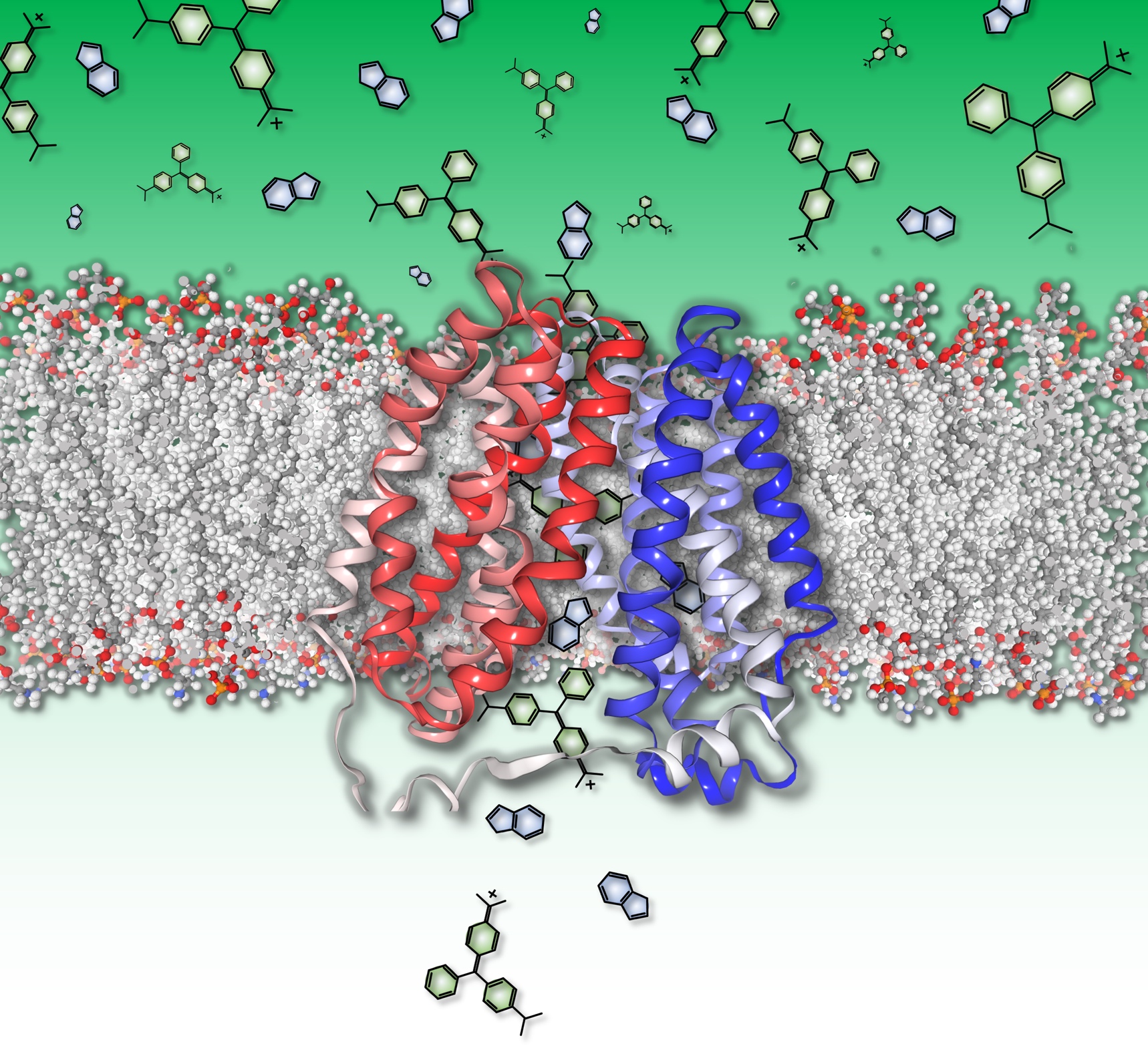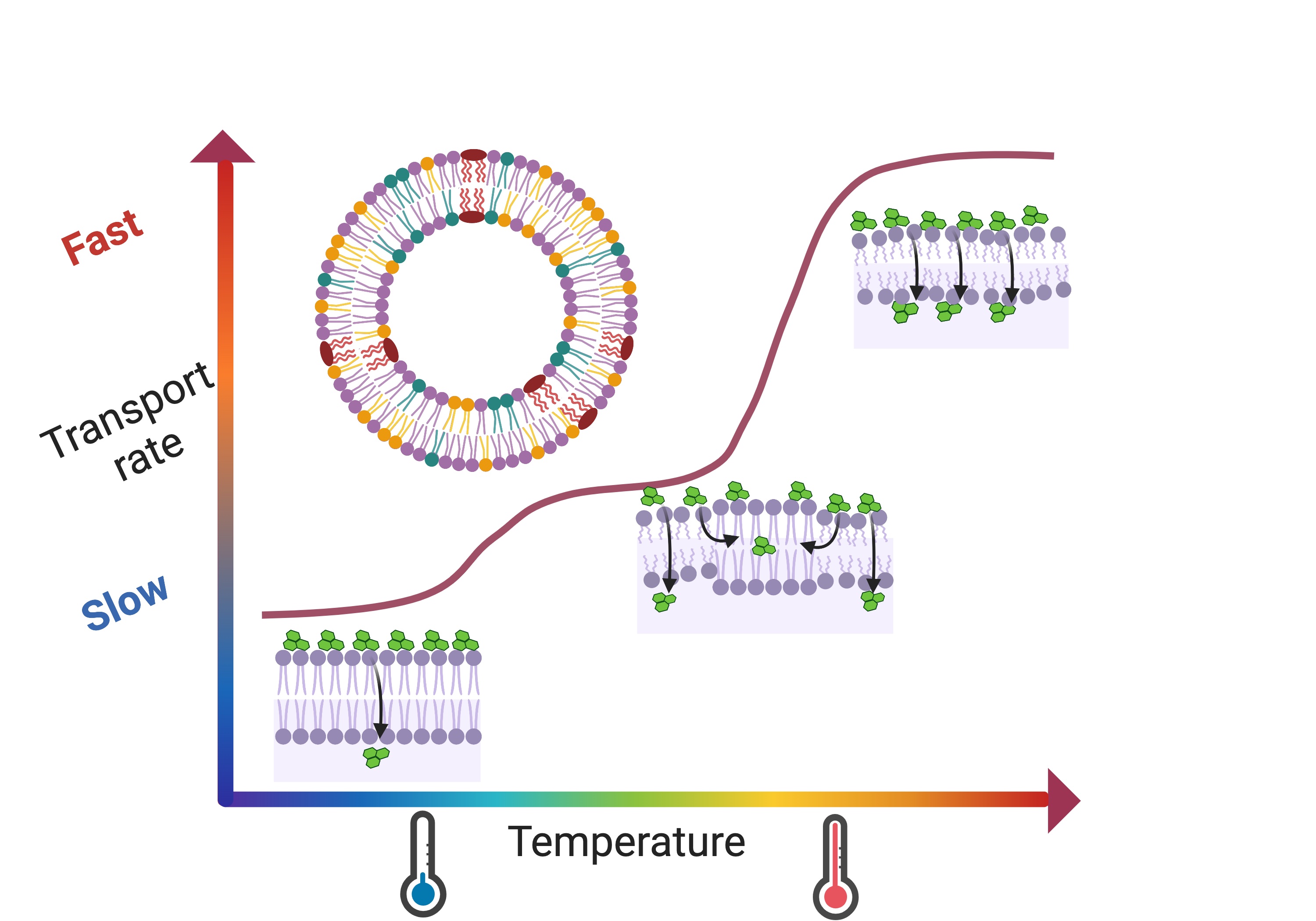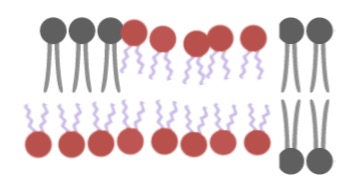
In this study, we investigated the role of indole signaling in antibiotic resistance, persistence, and tolerance in bacteria. We used second-harmonic light scattering (SHS), a nonlinear optical technique, to examine how exogenous indole affects bacterial uptake of the antimicrobial quaternary ammonium cation (qac), malachite green. By analyzing the transport rates of qac across individual membranes of Escherichia coli and Pseudomonas aeruginosa as well as E. coli polar lipid extract liposomes, we discovered that indole increases the bacterial uptake of antimicrobials through an interaction with the Mtr permease.
Our data analysis revealed that exogenous indole induced a 2-fold increase in qac transport rate across the cytoplasmic membranes of wild-type bacteria. However, it had no influence on an E. coli knockout strain lacking the tryptophan-specific transport protein (Δmtr) or the qac diffusing across the liposome membrane. This project developes a new methodology in understanding the complex interactions between indole signaling and bacterial antimicrobial uptake, with potential implications for combating antibiotic resistance.
we have conducted three interconnected projects to explore the influence of temperature on molecular interactions and transport across biological membranes.

In this project, we investigated the impact of phase transitions of lipid bilayer membranes on the passive transport of molecules, a concept with implications for drug delivery using thermosensitive liposomes (TSL). We measured the transport of a molecular cation across membranes of unilamellar liposomes composed of the total lipid extract of E. coli at varying temperatures, identifying two distinct phase transitions. Our findings demonstrated that transport rate constants increased dramatically at the known phase transitions, highlighting the significant influence of phase transitions on molecular transport across biological membranes.

In this study, we focused on the temperature-dependent molecular interactions between a molecular cation and a liposome composed of the total lipid extract of E. coli. Using second harmonic light scattering (SHS) and a kinetic model, we analyzed the time-resolved SHS kinetic responses to gain insights into the adsorption equilibrium constants for both leaflets of the membrane. Our research provides valuable information about the behavior of molecular interactions in lipid membranes and offers a potential pathway for enhancing drug delivery systems.

In this project, we aimed to prove the presence of lipid rafts in the cytoplasmic membrane of living bacteria by investigating the coexistence of membrane lipid phases using a non-invasive, label-free second harmonic scattering technique. We quantified changes in cytoplasmic membrane permeability over a temperature range to evaluate phase transition behavior in living bacteria. Our findings contribute to a better understanding of temperature-dependent molecular transport and membrane phase behavior in living cell membranes.
 Credit: CDC http://phil.cdc
Credit: CDC http://phil.cdc
This project explores the interactions between antimicrobials and bacterial membranes, focusing on how antimicrobials affect membrane permeability, a critical factor for bacterial survival. Although significant knowledge exists on the selective transport of molecules and ions through specialized protein channels, much remains to be discovered about how membrane structure influences the passive uptake of non-endogenous molecules. Understanding these interactions is essential for optimizing drug efficacy and comprehending the adaptability of microorganisms in harsh environments.
Research has shown that there are significant differences between the membranes of cancer cells and those of normal cells. These differences include variations in lipid composition, membrane fluidity, and the presence of specific surface markers. By leveraging these differences, we can develop targeted diagnostic methods that can identify cancer cells more accurately and with higher sensitivity compared to traditional methods. By understanding and exploiting these membrane differences, we aim to develop a new diagnostic method that can accurately identify cancer cells and ultimately improve early detection and treatment outcomes.